How ‘Biriyani ‘ came to India
It is said that an Arab trader ,brought it down from Kazakhstan via Afghanistan to Northern India. Some will dispose this suggestion as being utter nonsense because Biriyani already existed in India before the arrival of the arabs.(Perhaps they influenced the existing dishes.)
Another legend has it that Mumtaz Mahal,wife of Shah Jahan, invented this dish as a meal to feed the army.
However,some say the dish originated in West Asia where the ‘Nomads’ buried an earthen pot full of meat, rice and spices in a pit and eventually the pot was dug up containing ‘Biryani’. Whatever the legends may be, ‘Biryani’ was here to stay. Its amazing to know how this dish became quite popular from one place to another. It went all over the country with different regions having their own versions of Biryani. Indisputably, this is one dish people all over will eat and devour. These are a few varieties( there are over 26)
‘Kashmiri’ Biryani
Kashmiri cuisine is a mix of influences from both the Kashmiri Pandits, the Hindus who lived in the valley in the middle ages and by the cultures which arrived with the invasion the Kashmir region by Taimur from the area of modern Uzbekistan. Subsequently, it has been heavily influenced by other central Asian, Persian and Afghan cultures. Little is known about ‘Kashmiri’ Biryani.
Its origin can be found first with ‘Kashmiri Bhuna Ghost’ Biryani and the ‘Kashmiri Katche Ghost ki Biryani’, which is the result of Mughal emperor’s frequent visit to Kashmir. Today however, a variety of biryanis add up to the Kashmiri cuisine. Kashmiri biryanis stands out because of the addition of a hearty dose of asafoetida.
‘Awadhi’ Biryani
Lucknow,known as Awadh, in olden times was home for the Moghuls when they ruled India between 1800 to 1900. These Moghuls came up with the famous ‘Awadhi’ biryani which is popular in North India. The root recipe of Lucknow (Awadhi) Biryani lies in the Moghul dish.
‘Lucknowi’ biryani owes its success to a homogenous blend of spices. Meat cooked with fragrant spices, combined with rice in layers and finished on dum is known as biryani. If you want to eat the best biryani in the world you’ll need to travel to Lucknow. Lucknow and biryani have almost a symbiotic relation for the gourmet.
Haji Wahid Qurash’s ‘Wahid ki biryani’ of Aminabad, Idris Biryaniwala in Patanala Chowk is most famous for delicious biryani in Lucknow.
Kolkota Biryani
Kolkata biryani is far spicier than its cousins, and distinguishes itself by its use of potatoes. The whole, skinned potatoes in biryani take on all the nuances of flavour in the stock. Even this has a history behind it. This biryani originated from the Avadh royal family, which migrated to Kolkata with a coterie of cooks. The dish permeated from the royal family downwards to common households.From Lucknow the biryani moved to Calcutta when, in 1856, Nawab Wajid Ali Shah was deposed by the British. His team of cooks moved with him and so did the biryani . In Kolkata the biryani entered poorer homes, which could not afford meat everyday, so the meat was replaced by potatoes which came to be known as the ‘Calcutta Biryani’.
Hyderabadi Biryani
The most famous biryani, it initially came when Aurangzeb invaded the South and installed the Nizam-ul-mulk who later as the Asfa Jahi ruler became the Nizam of Hyderabad. So, as the influence of the Muslim rule, Hyderabadi Biryani and Arcot Biryani became popular. The Biryani spread to Mysore by Tipu Sultan of Carnatic. ‘Hyderabadi Biryani’ is made in different styles — ‘Katchi’ Biryani, where the meat is marinated in curd and then steamed with rice, and the ‘Pakki’ Biryani, where the meat is cooked with all the accompanying spices and then the rice added to the
resultant gravy in a sealed handi.
Tahiri/Tehri Biryani
Tehri is the name given to the vegetarian version of biryani.The vegetable biryani was originally made for the Mahajan Hindus, who were the cashiers and financiers of the Nawabs.
The vegetarian version or ‘pulao’ has some textured vegetable protein-based balls to present the impression of a meat-based dish for vegetarians.
The difference between biryani and pullao is that while biryani may be made by cooking the items together, pullao, is used to denote a dish where the rice is cooked separately from the other ingredients.
Malabar Biryani
Malabar biriyani is believed to be brought across the Indian Ocean by Arab Seafarers. The ‘Mappilas’(thats what the muslims in Kerala were called)also prepare a type of biriyani which is believed to have come from Samarkhand with the Mughals and migrated through the Deccan plateau to the south.
The Kerala Muslims have developed many variations of the biriyani – rice cooked with mutton, coconut and yogurt, mutton and egg biriyani and fish biriyani with spices, tomato, cashews and raisins to name a few. Biryani is also cooked differently. The meat and the rice (not the long basmati, but the shorter variety) are cooked separately. They are then layered in a narrow-neck pot and steamed, ensuring that the flavors of the meat completely encompass the rice. It is often served with a simple raw mango, coconut and green chili pepper chutney.
RAS BIRYANI RECIPES…
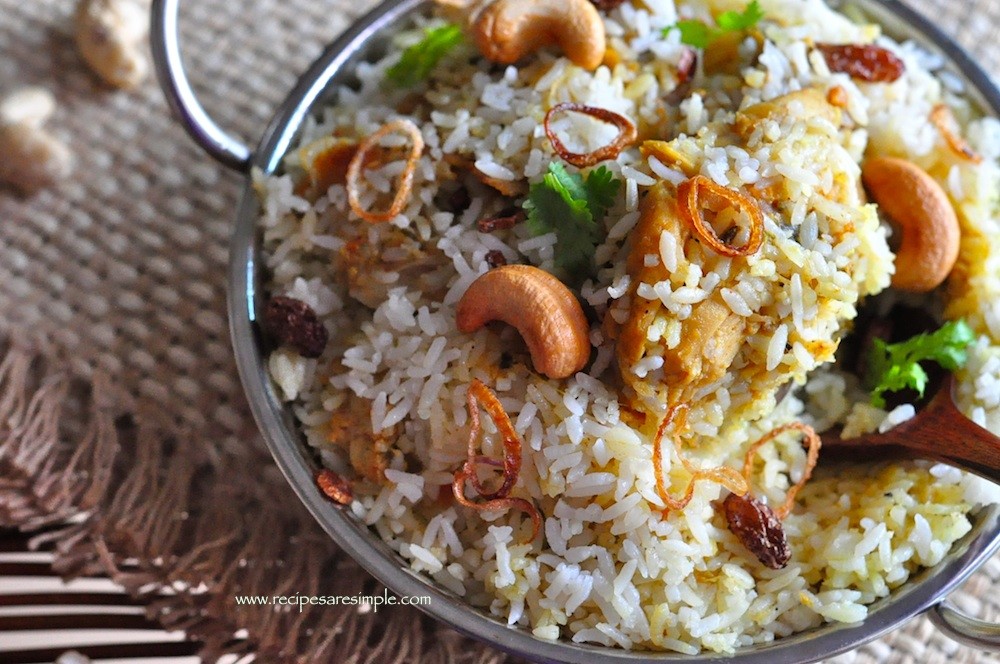
Thalassery Biryani 
Thalassery Chicken Biryani (Version 2 – with Marinated Chicken 
Delicious Vegetable Biryani 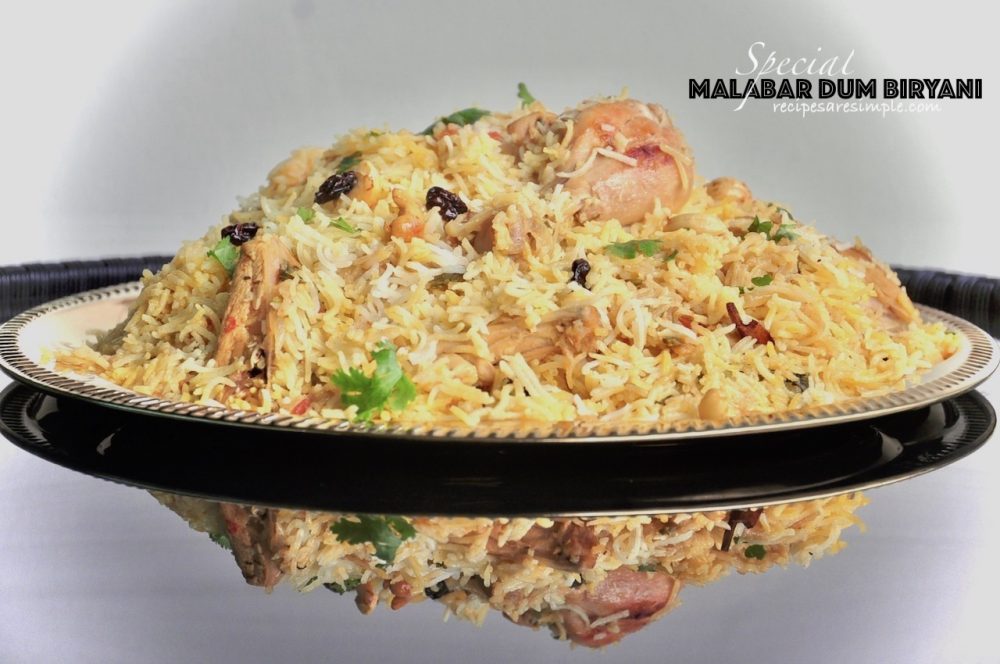
Malabar Chicken Dum Biryani 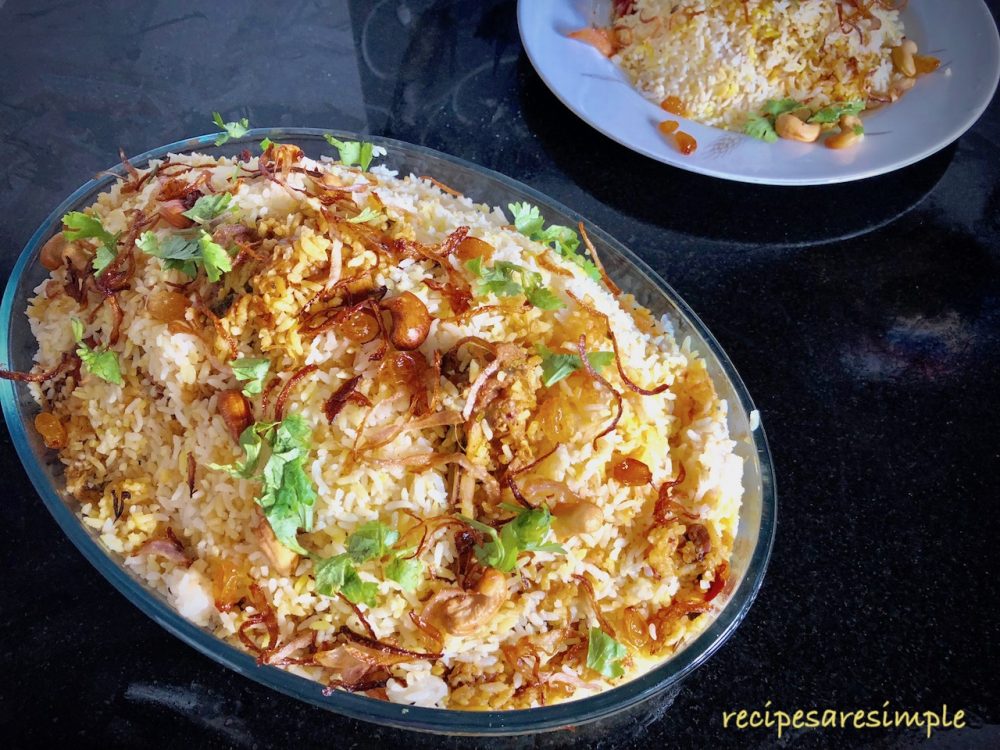
Thalassery Mutton Dum Biryani 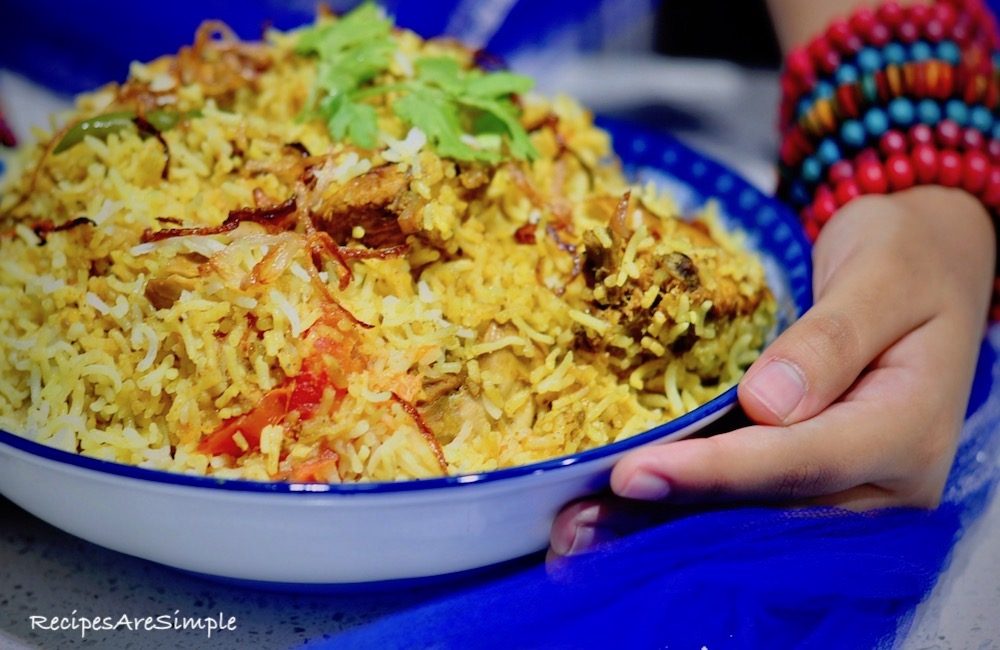
Hyderabadi Biryani 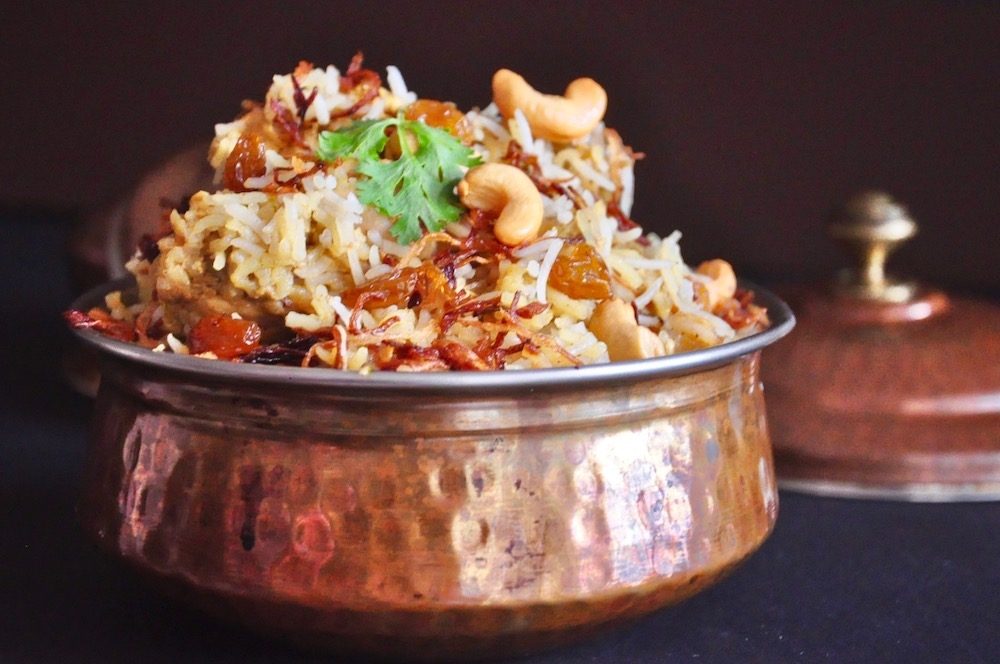
Calicut Chicken Biryani 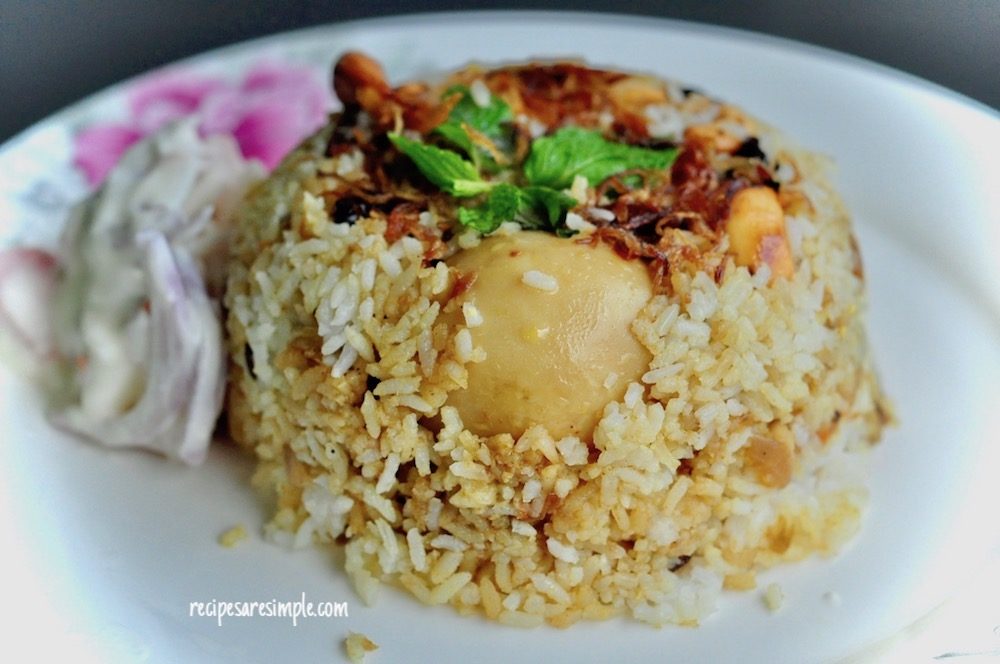
Thalassery Egg Biryani 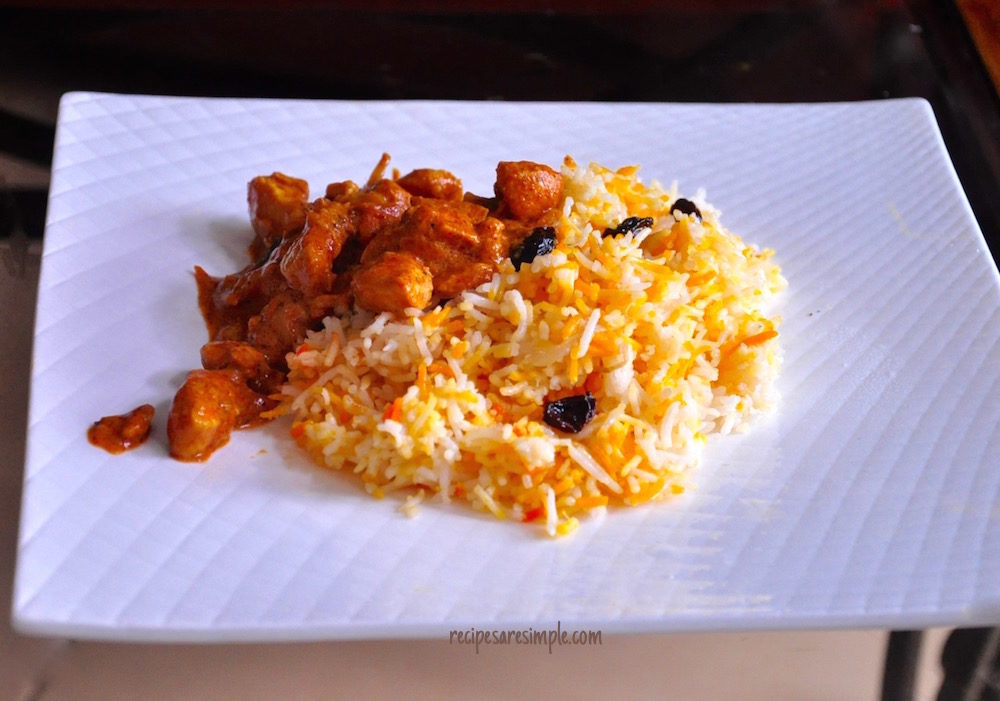
Butter Chicken Biryani 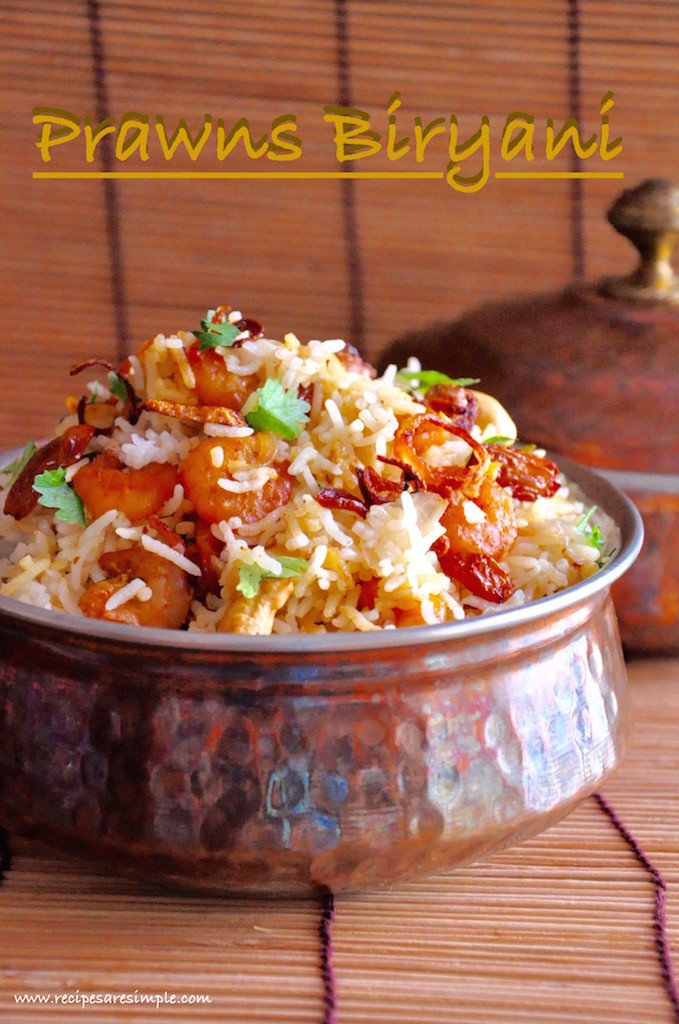
Delicious Prawns Biryani 
Arabian Pressure Cooker Biryani 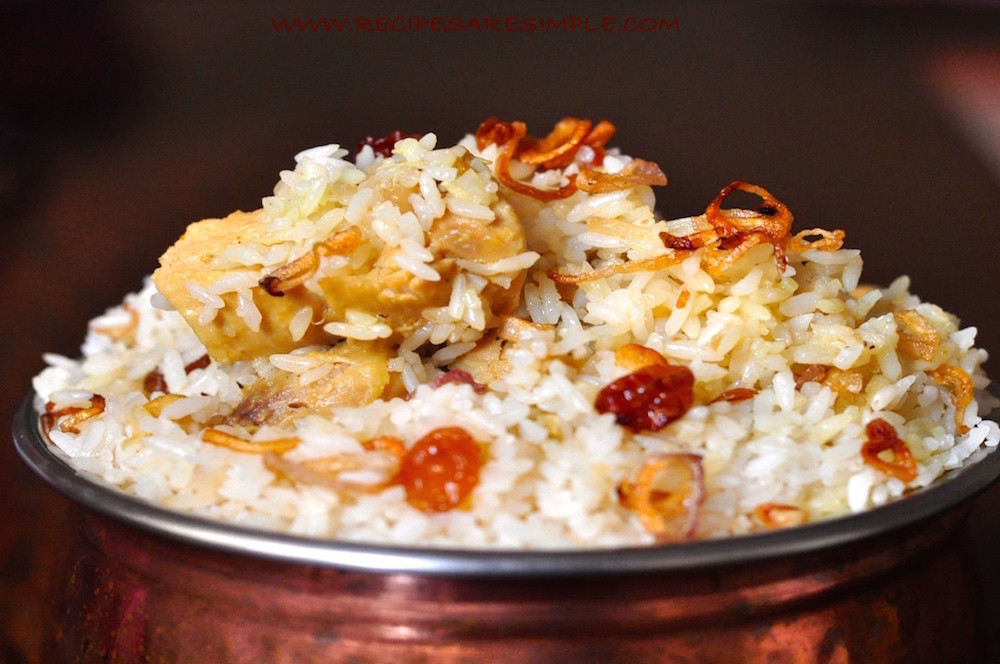
Malabar Chicken Biryani 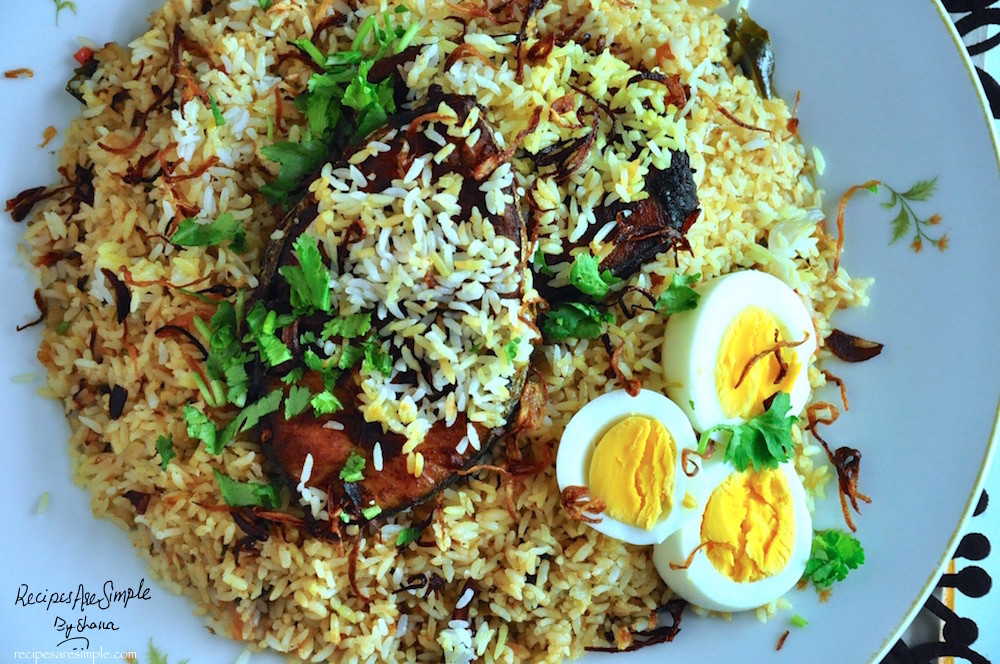
Malabar Fish Biryani 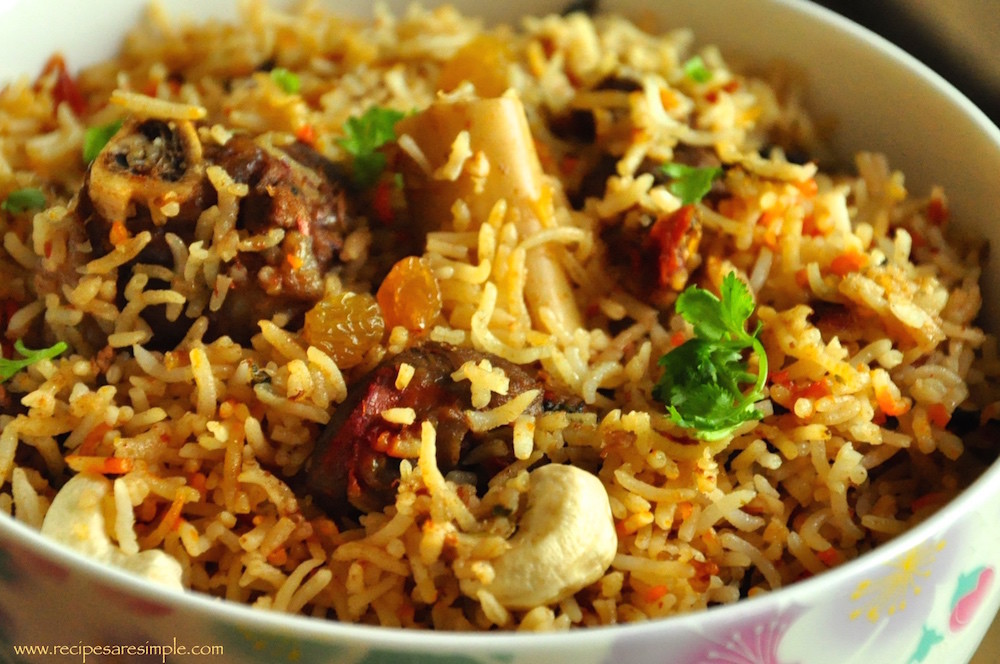
Ambur Biryani (Famous Arkot Biryani) 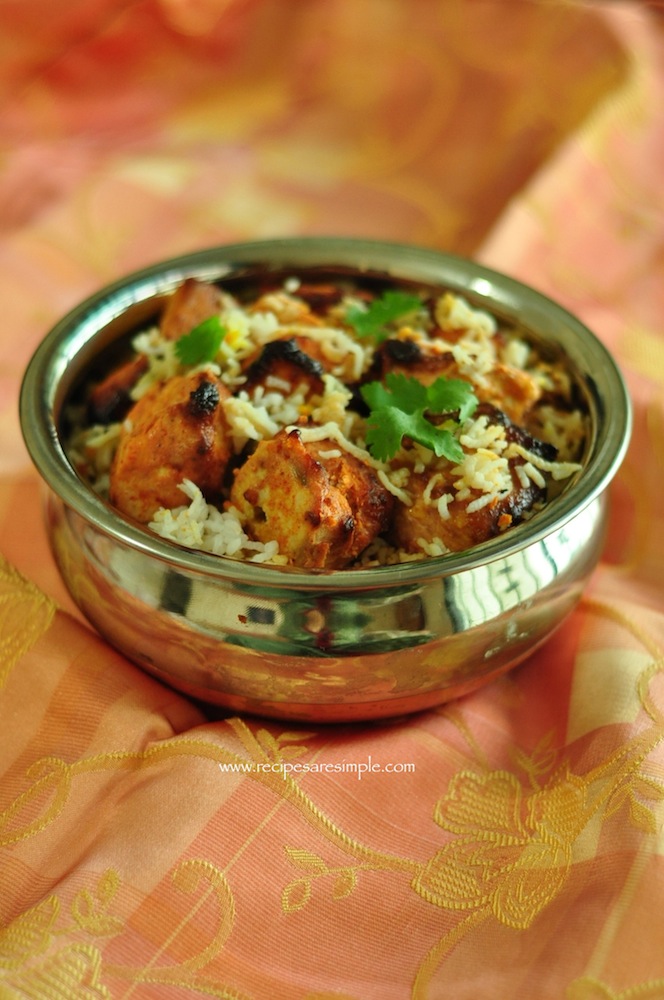
Chicken Tikka Biryani 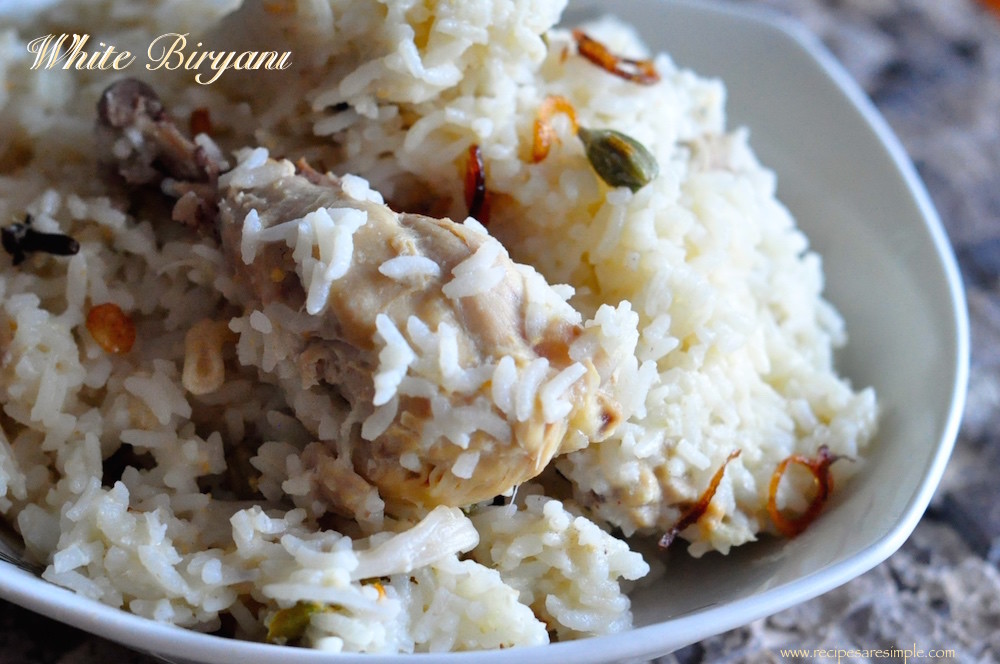
White Biryani Of Hyderabad Khansamma

Good info 👍
Very Informative. Always thought what would be the history behind Malabar Biryani. I have tasted many biruyani’s, but none like Malabar.
[…] Quote from the source: … […]
[…] Quote from the source: … […]